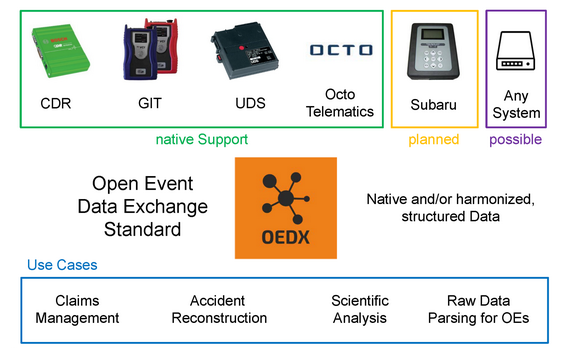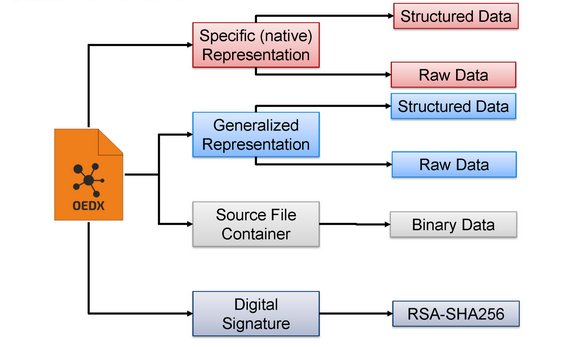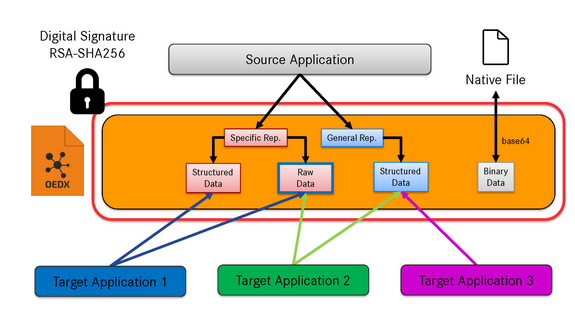OEDX
OEDX is an XML based data structure which aims to facilitate the exchange, aggregation and analysis of event data. Event data which is being generated in automotive EDR's, UDS systems or telematics dongles and processed in respective native applications can be saved in the non-proprietary OEDX format to allow post processing of the data in various applications. Event data stored in an OEDX file can be merged, compared and post processed across different systems.
General Concept
OEDX files are pure XML and represent data that originates from different source systems that produce Event Data, primarily EDRs according to US regulations. OEDX has specific support to represent data coming from various EDR retrieval tools like:
- Bosch CDR
- Hyundai-KIA GIT
- Tesla EDR
- VDO Kienzle UDS
- Subaru EDR
- Octo Telematics Systems

File Structure
Generally an OEDX file consists of up to four main sections represented in an XML data structure:
- Header This mandatory section contains general information about the dataset including the creating application, user comments, etc.
- Body This section contains the actual EDR data. The data can be written in a specific representation for supported systems and/or in the generalized representation. OEDX allows to have specific and generalized data in one file.
- SourceFile A native file written by the source application can optionally be included in an OEDX file. The file will be treated as a binary and will be stored in base64 encoded format inside the XML file.
- Signature In order to provide protection against falsification of OEDX files the standard optionally allows OEDX files to be digitally signed. The signature process currently proposed is a whole file signature based on current W3C recommendations. While the generating application is free to choose the digest and signing algorithms we propose to use RSA-SHA256 for this purpose. A public key can optionally be included in the file in order to allow for simplified signature checking. OEDX does not include or promote any way of public key exchange. It is up to the user to publish/receive/validate any key data that is exchanged.

Flexible Data Transfer
As described above OEDX files can contain data in various ways. For several supported source applications there are specific representations. These match the data structure of the source application very closely so that data can be transferred without any loss of precision. The specific representation can also include raw data if the source application also writes raw data to its file format.
The second part that can exist is a general representation. This is a harmonized data structure which aims to make data that originates from various sources. Data in the general representation can be used for example to add data from multiple source applications into one common database. Data that is written in the general represenation will probably not represent all elements that are contained in the source file format.
The third part that can exist in an OEDX file is the binary raw data of the source file. This makes it possible to include a source file as-is for for future processing within the OEDX data structure.
All data elements
- Strutured data (specific)
- Raw data
- Strutured data (generalized)
- Binary data
are optional. The writing application can choose which kind of data is written in an OEDX container. Also a target application can chose which data elements will be retrieved from the OEDX container.

More Information
Sample files and the XML schema definition for OEDX are available on request. If you would like to know more about OEDX or would like to use it please get in touch with us.